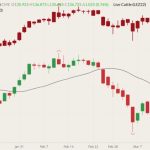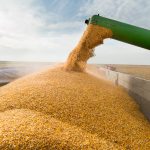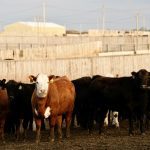Compared to last week, western Canadian yearling markets traded $2 higher to as much as $5 lower depending on the region. Mid-weight calves weighing 650-800 lbs. were relatively unchanged while lighter weight calves were steady to $3 higher on average. June live cattle are off $9 from their mid-February highs while the December 2022 live […] Read more
Tag Archives alberta — page 59

Klassen: Feeder cattle market experiences volatility

Spring road bans coming into effect across Prairies
MarketsFarm — Warming temperatures and melting snow across Western Canada may cause some disruptions to grain and livestock movement over the next few weeks as seasonal spring road restrictions come into effect across the Prairies. Annual spring road restrictions set axle weight limits for vehicles moving on certain roads, in an effort to reduce the […] Read more

Most of Prairies still very dry, but recovery possible
Southern Manitoba considered out of drought
MarketsFarm — Despite the Prairies receiving above-normal amounts of precipitation during February, the great majority of the region remained highly vulnerable to more dryness going into spring, according to the Canadian Drought Monitor. The monitor’s latest report showed those areas of the Prairies tackling extreme drought to have retracted somewhat. As of Feb. 28, that […] Read more

Rye in strong position going into 2022
MarketsFarm — Last summer’s drought sharply reduced yields of many crops across the Prairies, leaving multiple supply challenges and rising prices in the aftermath. Western Canadian rye, however, was largely left unscathed, which may bode well for the crop heading into 2022. Rye production came in at 473,000 tonnes for 2021-22, according to Statistics Canada […] Read more

Klassen: Surge in feed grain prices shocks feeder cattle market
Compared to last week, western Canadian yearling markets traded $3-$5 lower on average. Feeder cattle weighing 650 to 800 lbs. were relatively unchanged to $3 lower. Calves under 650 lbs. were steady to $4-$6 lower in Alberta, unchanged in Saskatchewan and $3-$5 higher in Manitoba. Fleshier yearlings and calves were heavily discounted last week with […] Read more

Prairie cash wheat: Russia-Ukraine conflict fuels price rallies
U.S. wheat futures way up on week
MarketsFarm — Russia’s ongoing invasion of Ukraine has not only sparked a conflict between two of the world’s major wheat exporters, but also limit-up price rallies for wheat futures during the week ended Thursday. As sanctions grow against Russia, as well as uncertainty over access to Ukrainian ports on the Black Sea, fears of a […] Read more

Feed weekly outlook: Rising oil prices increase freight charges
MarketsFarm — Acquiring livestock feed has been increasingly expensive as Russia’s ongoing invasion of Ukraine, and a retaliatory ban on Russian oil imports by many Western nations, has caused oil prices to severely rise every day. As corn imports from the U.S. continue to make their way into Alberta feedlots, the cost to transport them […] Read more

Klassen: Feeder market shows resilience
Compared to last week, western Canadian yearling markets traded $2-$3 on either side of unchanged. Calves in the range of 600-800 lbs. traded steady to $4 higher. Calves under 600 lbs. were $1-$2 higher in Alberta and Saskatchewan but traded $2-$3 lower in Manitoba. Alberta feedlot operators appeared to shrug off the geopolitical events last […] Read more

Prairie cash wheat: Spring wheat bids higher, activity choppy
MarketsFarm — Spring wheat bids across Western Canada moved higher during the week ended Thursday as gains in U.S. futures and a weaker tone in the Canadian dollar provided support. Russia’s invasion of Ukraine contributed to gains in wheat futures, but the volatile situation led to large price swings in the markets with values backing […] Read more

Klassen: Weather factors influence calf prices
Compared to last week, western Canadian yearling markets traded $4 lower to as much as $5 higher. Mid-weight feeder cattle traded relatively unchanged with strong demand noted on steers. Steer calves were firm, trading $2-$5 higher while heifer calves traded $4-$5 on either side of unchanged. The market was hard to define for calves and […] Read more

